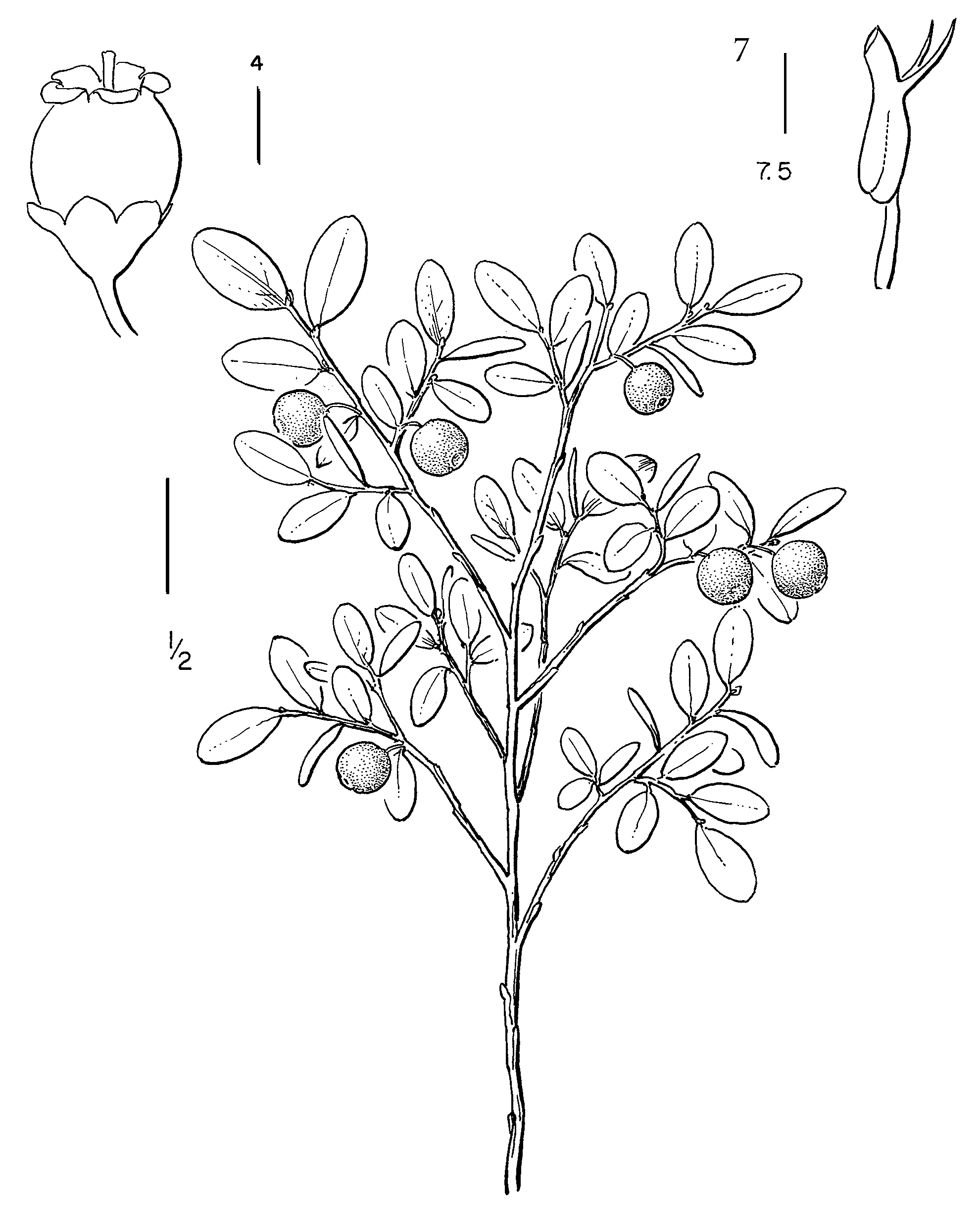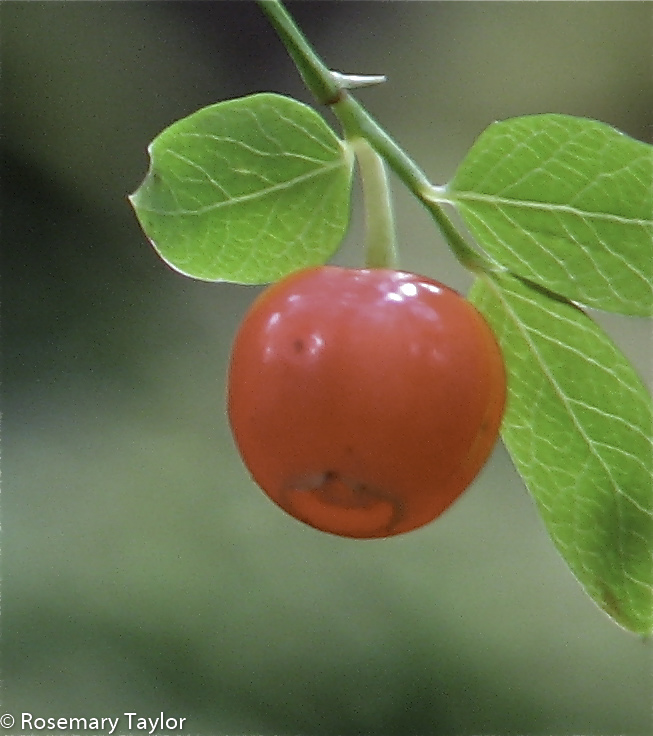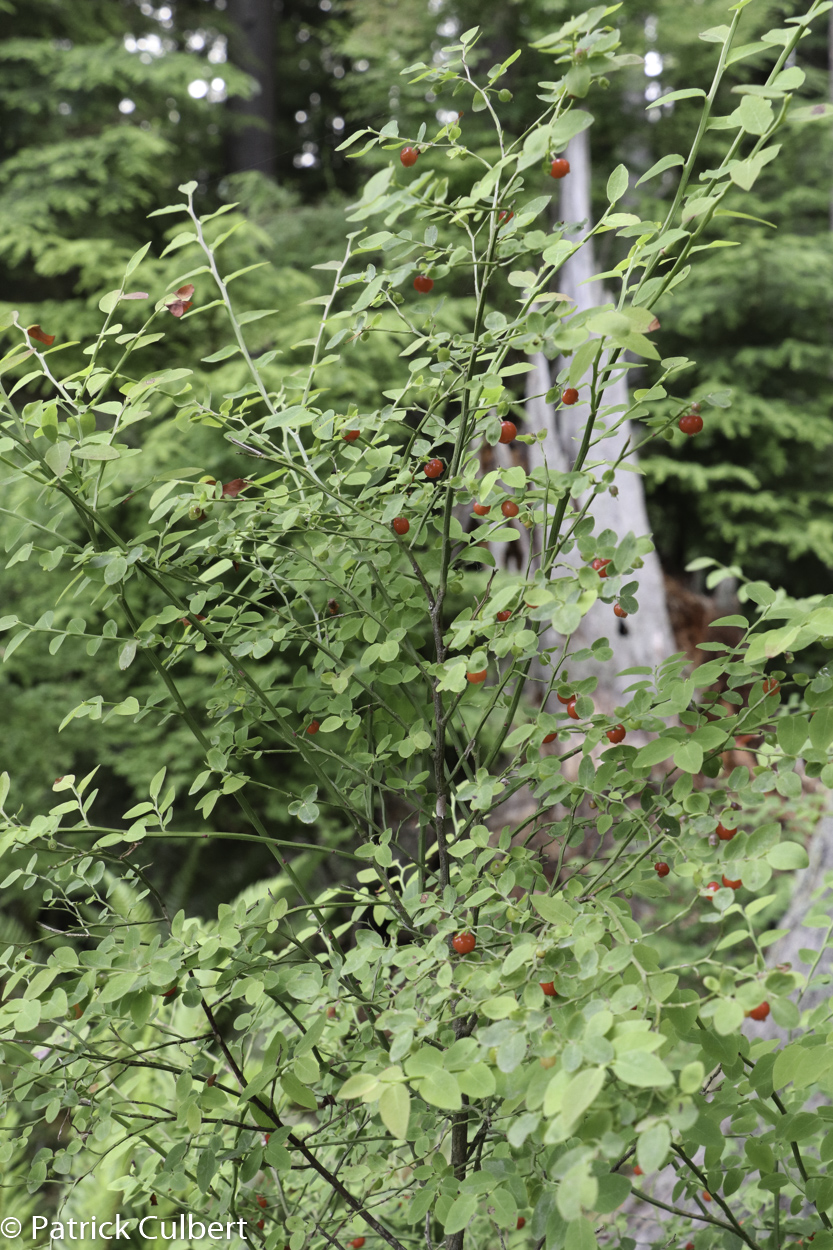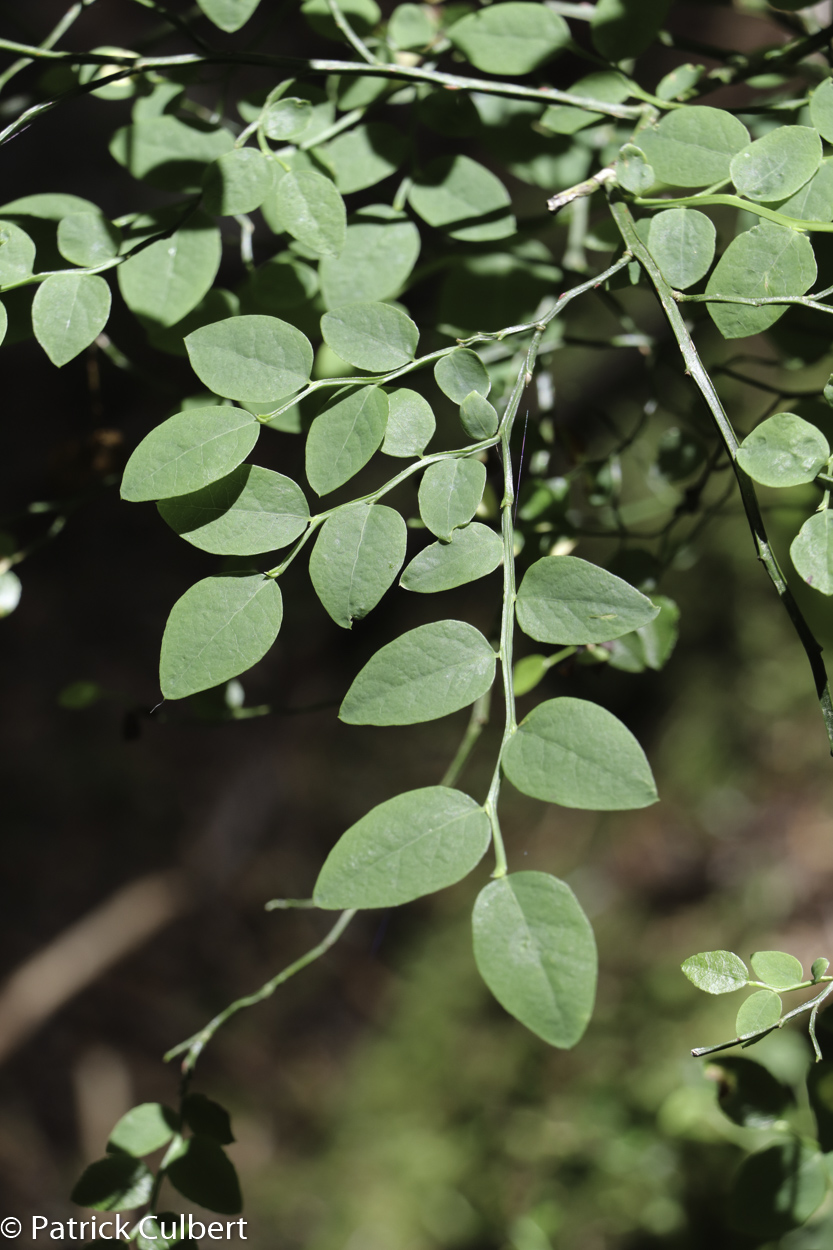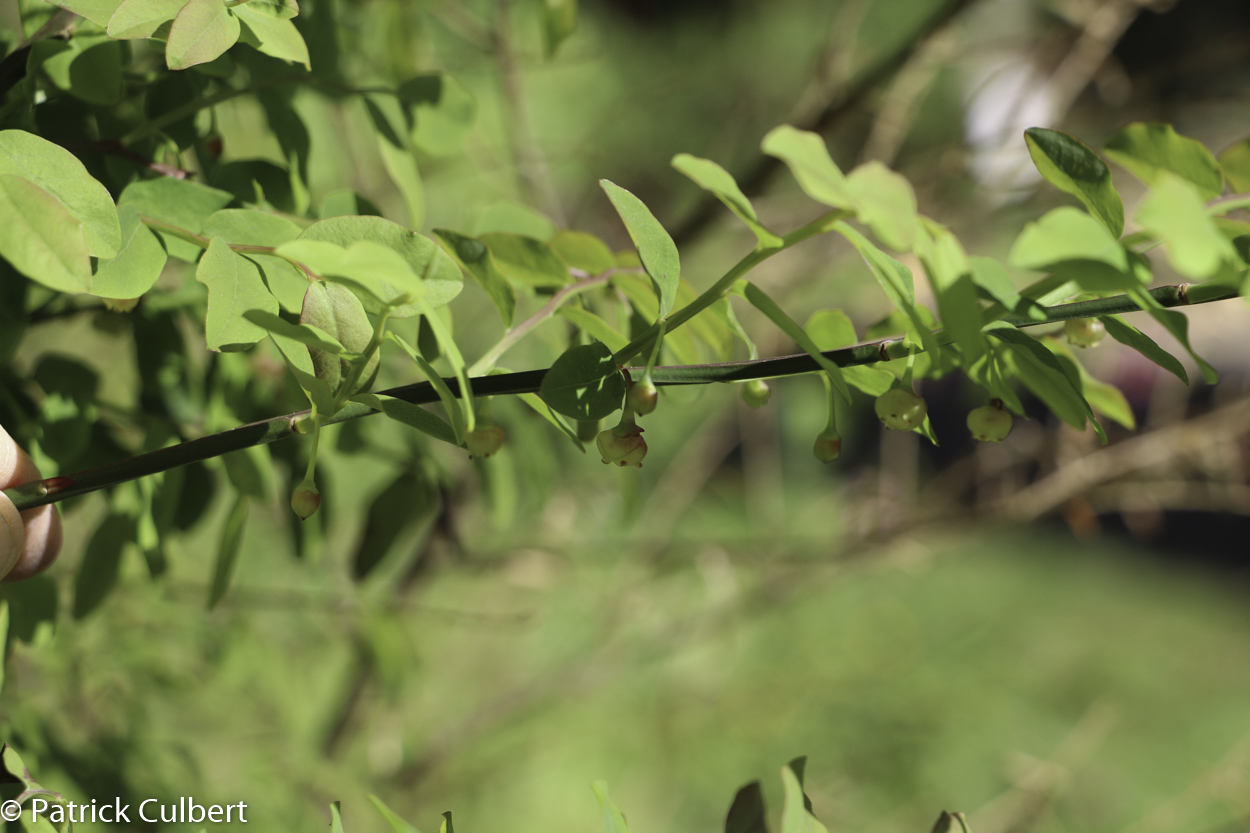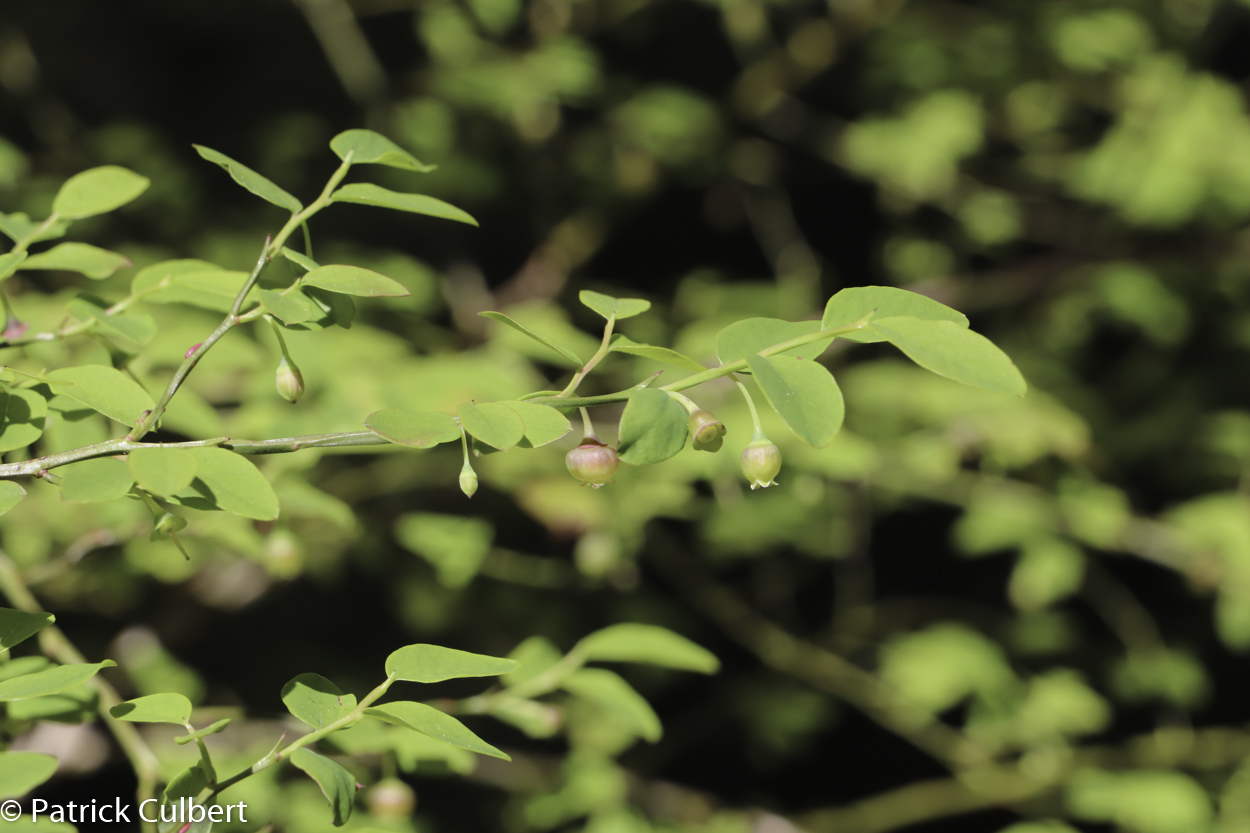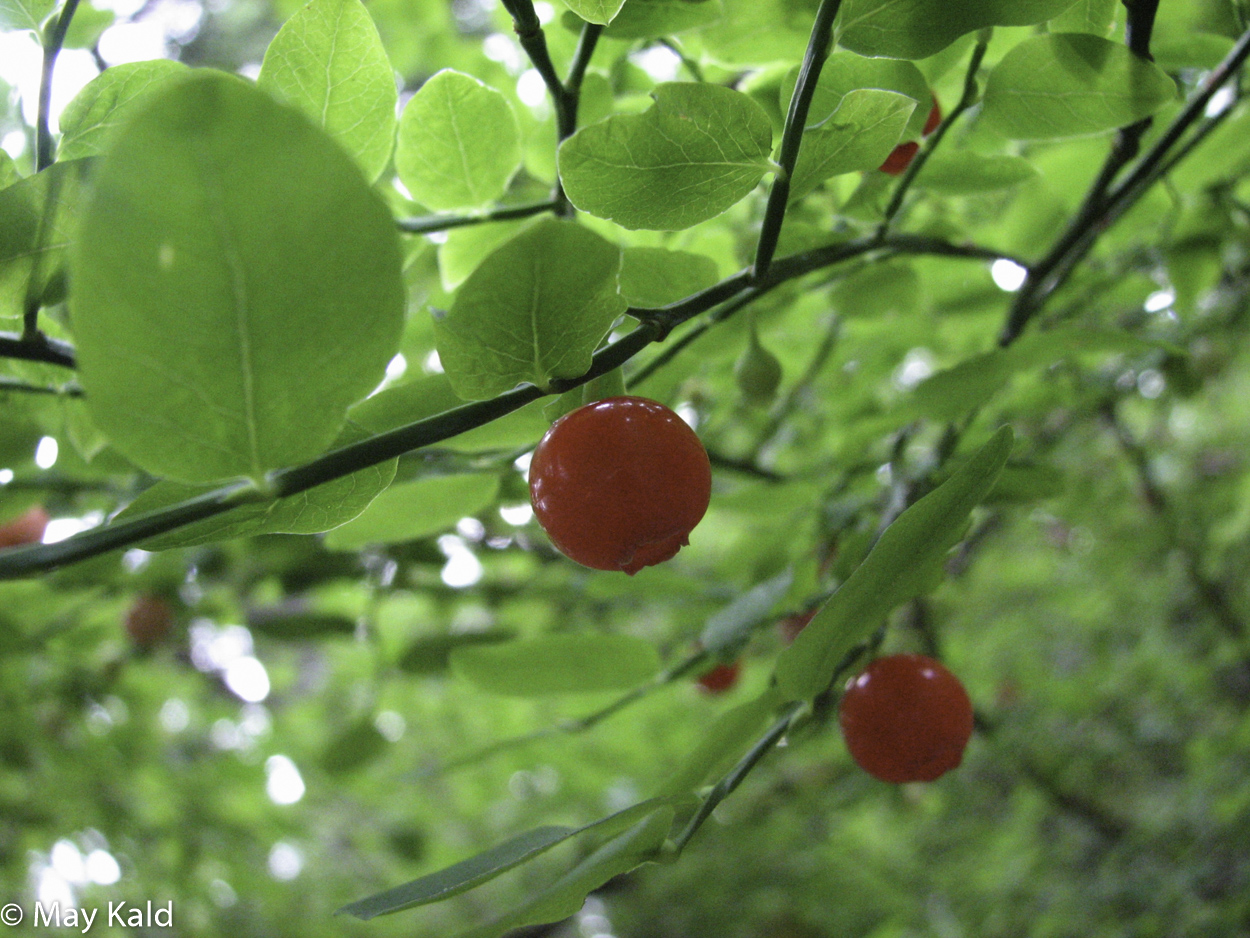Vaccinium parvifolium – red huckleberry
Common Name
red huckleberry
Family
Ericaceae
Scientific Name
Vaccinium parvifolium
Soil Moisture Regime (SMR)
- Medium (M)
Soil Nutrient Regime (SNR)
- Poor (P)
Video link
Hitchcock, C. Leo, and Arthur Cronquist. Flora of the Pacific Northwest: An Illustrated Manual © 1973. Reprinted with permission of the University of Washington Press.
General / Habitat
- Erect shrub up to 4 m tall
- Grows in low to middle elevations, often in coniferous forests at the edge or under canopy openings
Key Identifying Characteristics
- Form: bright green branches, strongly angled
- Leaves: alternate, oval, entire (edge not toothed), smaller than other Vaccinium species we are looking at
- Flowers: greenish yellow to pinkish, bell-shaped, single in leaf axils (where leaf joins stem)
- Fruit: bright red, round berries up to 1 cm long, edible but a little tart
Lookalikes
- Vaccinium ovalifoium (oval-leaved huckleberry)
- Has blue-black berries, larger leaves
- Vaccinium alaskaense (Alaskan huckleberry)
- Has blue-black berries, larger leaves
Interesting Characteristics
- Often grows on stumps or logs (or in decaying wood in ground)
- Vaccinium genus includes huckleberries, blueberries, and cranberries. All have bell-shaped flowers.
External References
Sources
Douglas, G.W. et al (Editors). 1998-2002. Illustrated Flora of British Columbia, Volumes 1 to 8. B.C. Min. Environ., Lands and Parks, and B.C. Min. For., Victoria, B.C.
Pojar, J. and A. MacKinnon. 2014. Plants of Coastal British Columbia Including Washington, Oregon & Alaska. B.C. Ministry of Forestry and Lone Pine Publishing. Vancouver, B.C.

